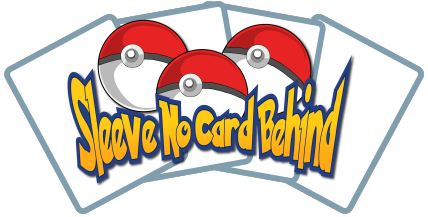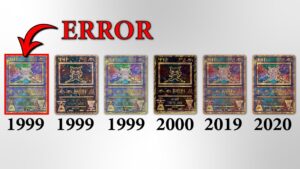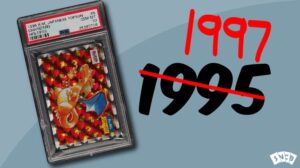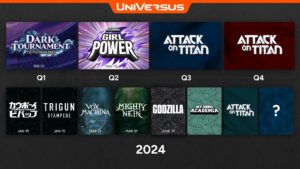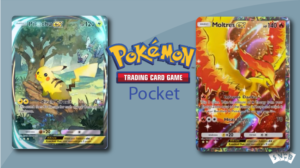What is a Holo Trading Card?
-
By: Oliver Copeland
- Published:
- Last Updated: December 3, 2023
You’re probably wondering why everyone is going bonkers over the “holo” cards, hey? Well, they’re shiny, rare, and more valuable. In this article, we’re going to dive into what makes a card holo, and what it means to collect holo cards.
Most trading cards are simple card stock with a design printed over top. However, some card stock is treated with an aluminum foil layer, resulting in appealing refraction of the light spectrum. Holo cards are rarer than regular cards, cost more, and for these reasons, are highly sought-after by collectors.
How Holo Cards Are Made
The fine details of the card manufacturing process are largely kept secret to prevent counterfeits from being created. However, we have a pretty good idea of how holo cards are made.
First, the card stock (‘cardboard’ that cards are made of) has to be treated. This is referred to as the “foil treatment” where a thin layer of aluminum is applied. This isn’t done to each card individually but instead is applied to a large sheet that will be cut into many cards.
Once the sheet is foil treated, it will then be shipped to the printing facility. The printing process is, again, partially unknown depending on the company. However, we know the basics.
The foil-treated sheets go through the printing process where many layers of ink will be applied to the sheet. Unless the ink is opaque, the foil will show through. Because of this, an opaque layer is first printed onto the sheet, where the foil will be muted. In the case of a Pokémon or Yu-Gi-Oh card, this is often everywhere but the illustration box. Then the rest of the ink layers will be printed normally, just like a regular office printer (kind of).
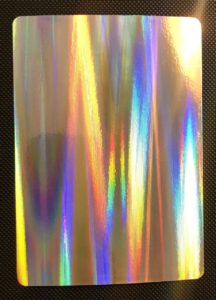
Finally, a lacquer layer is printed on top of the card to seal everything in place, and the large sheets will be cut up to create individual cards. This is a simplified understanding of the process.
Are Holo Cards Rarer?
Cards with the holofoil treatment are indeed rarer than regular cards. Almost all trading card games or sports cards insert one holo per booster pack. It’s easy to understand why they are rare.
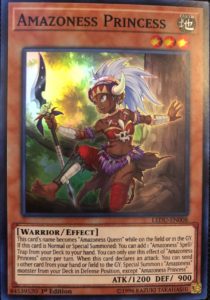
Cards that are sought-after, such as full art Pokémon cards, will always be holographic. So holo cards are rare, but the companies also purposefully make the most sought-after cards holo, making the effect two-fold. Holo cards are rare and rare cards are holo.
Different Kinds of Holo Cards
There are many different methods of creating different holo cards across different trading card games. Yu-Gi-Oh has its own unique holo designs, while Pokémon has its own as well.
This can vary from the actual foil treatment of the card stock to the ink layers printed on top. A common holo card in the Pokémon world is called a “reverse holo”. This is when the opaque layer of ink is printed under the illustration box, leaving the entire background of the card holo.
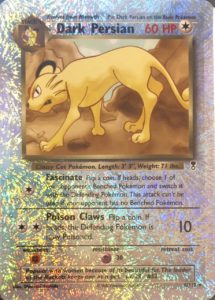
Even sports cards have unique holo patterns and designs. Trading card companies are under pressure to keep the product design fresh and enticing, so we’ll always be seeing new designs.
Are Holo Cards Worth More?
As stated above, rare cards are made holo. So in most cases, yes, holo cards are worth more. There are some situations where a non-holo card will sell for a high price, such as rookie cards in the sports card world, but generally speaking, holo cards tend to fetch more on the second-hand market.
Having cards graded can increase the value. So in this case, a non-holo that is graded a PSA 10 vs. a holo that is graded a PSA 1 will have a great difference in price. If the cards are the same aside from the holo effect and grade, the non-holo will likely sell for more due to its pristine grade.
Final Thoughts
The world of trading cards is a fascinating one. These small pieces of cardboard sometimes sell for over a million dollars. If you’re just getting into it or looking to learn in order to support your kids or spouse, you’ll want to get a grasp on things like holo cards. Feel free to visit sleevenocardbehind.com for endless articles made specifically for beginners in trading cards!
